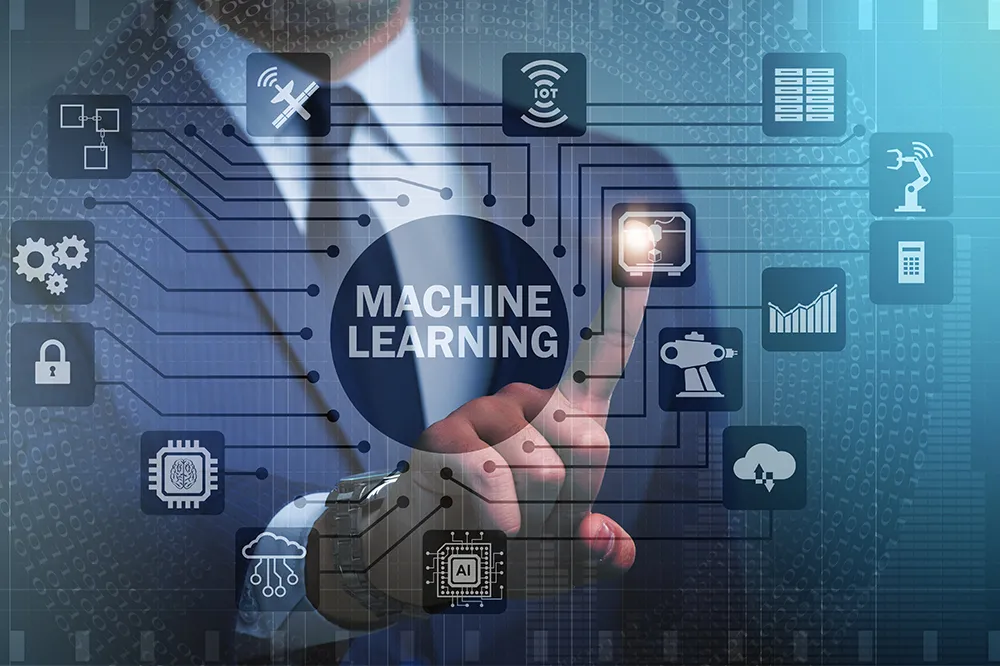Demystifying Machine Learning: Empowering Computers to Learn
In the ever-evolving landscape of technology, Machine Learning (ML) stands as a beacon of innovation, reshaping the way computers learn and adapt. This blog delves into the captivating world of Machine Learning, breaking down its concepts, applications, and the profound impact it's having on industries and society at large.
Introduction: Unveiling the Essence of Machine Learning
Machine Learning is the art of enabling computers to learn from data without being explicitly programmed. Unlike traditional programming, where rules are hand-coded, ML algorithms improve their performance by learning patterns and making predictions based on the provided data. This fundamental shift in approach has unleashed a wave of possibilities across domains.
The Building Blocks: Types of Machine Learning
Machine Learning can be categorized into three major types: supervised, unsupervised, and reinforcement learning. Supervised learning involves training models on labeled data to make accurate predictions, while unsupervised learning deals with finding hidden patterns in unlabeled data. Reinforcement learning, on the other hand, guides models through a trial-and-error process to optimize decision-making.
Applications That Redefine Industries
Machine Learning's transformative potential is vividly demonstrated through its diverse applications. In the field of healthcare, ML aids in early disease detection, personalized treatment recommendations, and even drug discovery by analyzing vast datasets. Financial institutions leverage ML for fraud detection, risk assessment, and algorithmic trading, enhancing efficiency and security.
Conquering Language and Perception: Natural Language Processing and Computer Vision
Within Machine Learning, two prominent subfields have emerged: Natural Language Processing (NLP) and Computer Vision. NLP equips computers to comprehend, interpret, and generate human language, giving rise to virtual assistants, sentiment analysis tools, and language translation services. Computer Vision empowers machines to understand and interpret visual information, enabling facial recognition, object detection, and autonomous vehicles.
The Algorithmic Alchemy: Deep Learning
Deep Learning, a subset of Machine Learning, has catalyzed remarkable breakthroughs by mimicking the human brain's neural networks. Deep Learning models, known as neural networks, process complex data hierarchies, making them adept at tasks like image and speech recognition. This advancement has paved the way for self-driving cars, personalized recommendations, and medical diagnoses with unprecedented accuracy.
Navigating the Challenges: Bias, Interpretability, and Data Privacy
While Machine Learning holds immense potential, it's not without challenges. Bias within algorithms can perpetuate societal inequalities, requiring careful calibration. The "black box" nature of some ML models, particularly deep neural networks, raises questions about transparency and interpretability. Additionally, concerns about data privacy and security must be addressed as models learn from sensitive information.
Shaping Tomorrow: The Future of Machine Learning
As technology advances, so does Machine Learning. Quantum computing, a cutting-edge field, could exponentially enhance ML's capabilities by solving complex problems at unprecedented speeds. Federated Learning, a concept gaining traction, allows models to be trained across decentralized devices, preserving privacy while enhancing collective knowledge.
Closing Thoughts: A Learning Odyssey
Machine Learning has propelled us into a new era of intelligent machines, revolutionizing industries and the way we interact with technology. With its ability to decipher patterns from vast datasets, make predictions, and drive autonomous systems, ML holds the potential to reshape the very fabric of our lives.
In conclusion, Machine Learning is a journey of discovery, innovation, and transformation. As we venture deeper into this realm, it's essential to balance technological advancement with ethical considerations and societal impact. Embracing the power of machines that learn, we embark on a future where the boundaries of possibility continue to expand.
















